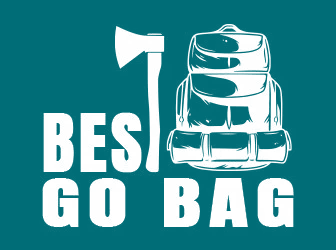Of all the places you could be stuck during an extreme weather event, your vehicle is probably not the worst.
After all, you have shelter from the storm. As well as heat or air conditioning, as long as there’s enough gas to keep your vehicle running.
But it’s rather inconvenient for your biological needs. Including your need for food and water.
Many extreme weather events cause accidents. Some of which can block roads for hours at a time. Even if you’re “safe” in your stranded condition, you’re going to get hungry. And that half-eaten candy bar sitting on the back seat isn’t going to cut it.
Assume you’ll get stranded
Spring might be the most welcomed season of the year. Especially for those who just endured a rough winter.
But spring also brings severe weather in many parts of the country. Late-season snowstorms, tornadoes and heavy rainstorms producing flooding can wreak havoc on your travel plans.
Today I’d like to provide some advice about how to prep your vehicle to effectively deal with extreme spring weather.
As well as some suggestions about items to keep inside your vehicle. In case you get stranded by that weather.
Maintenance makes car sense
First let’s tackle how to prep your vehicle so that it’s ready for whatever types of extreme spring weather we get.
- Keep your vehicle’s gas tank as full as possible. Now, you don’t want to stop every few blocks to top off your tank. But never let it get below half full.
- Get regular oil changes. And keep a couple of unopened quarts of oil in your trunk.
- Check your fluid levels frequently. Windshield wiper fluid could actually save a life in a snow or ice storm. And keep an extra bottle of wiper fluid in your trunk. As well as antifreeze.
- Check your battery regularly. A dead battery is the most frequent cause of drivers getting stranded.
- Check your spark plugs and carry spares, along with fuses.
- Check your brakes periodically. No need to explain why.
- Check your tires’ air pressure and treads regularly.
Vehicle emergency kit items
Now let’s turn our attention to the items you should have in your vehicle’s emergency kit.
- Vehicle insurance card with roadside assistance phone number
- Power bank to charge your cellphone and other electronic devices
- Spare tire and jack. And know how to use them.
- Small but sturdy foldable shovel. It could help you dig out of snow or mud.
- Roadside flares or glow sticks
- Foam tire sealant for minor tire punctures
- Tactical flashlight
- Jumper cables
- First-aid kit
- Tool kit. Including screwdrivers, pliers, vise grips, wrenches, tire pressure gauge and a multi-tool.
- Car fire extinguisher
- Wool blankets and a sleeping bag
- Boots, wool socks, gloves and hats
- Towels (cloth and paper)
- Duct tape
- Rain gear, umbrella, snow brush and scraper
- Sanitary items. Including hand sanitizer, trash bags and wipes.
- Hand-crank radio
- Whistle
- Road maps
- Sand or non-clumping cat litter for tire traction
- Tow rope
- Fire starters
- Cash
- Notebook and pens
- Emergency contact information
- Reflective vest
- Pepper spray. In case of an unwanted approach from a human or animal.
- Bottled water
- Non-perishable food
Hold the mayo
Now, there are a number of non-perishable food items you could keep in your vehicle. Mostly depending on what you like to eat or would be most filling.
But the important thing here is to have food that fits a number of criteria. For example, it should be something you enjoy the taste of. And that requires no preparation. Something you can just open and eat.
For another, it should be able to withstand a wide range of temperatures. From very hot to very cold.
Finally, your non-perishable food should not leave you thirsty. Because you either won’t have enough water to satisfy your thirst or you’ll drink enough to fill your bladder. Either way you’ll be uncomfortable as you wait in your stranded vehicle.
Luckily… I know just the thing that checks every box I’ve listed here. It’s the 4Patriots Emergency Food Bars. They’re pretty darn delicious, they’re made to withstand extreme temperatures, and require absolutely zero preparation.


